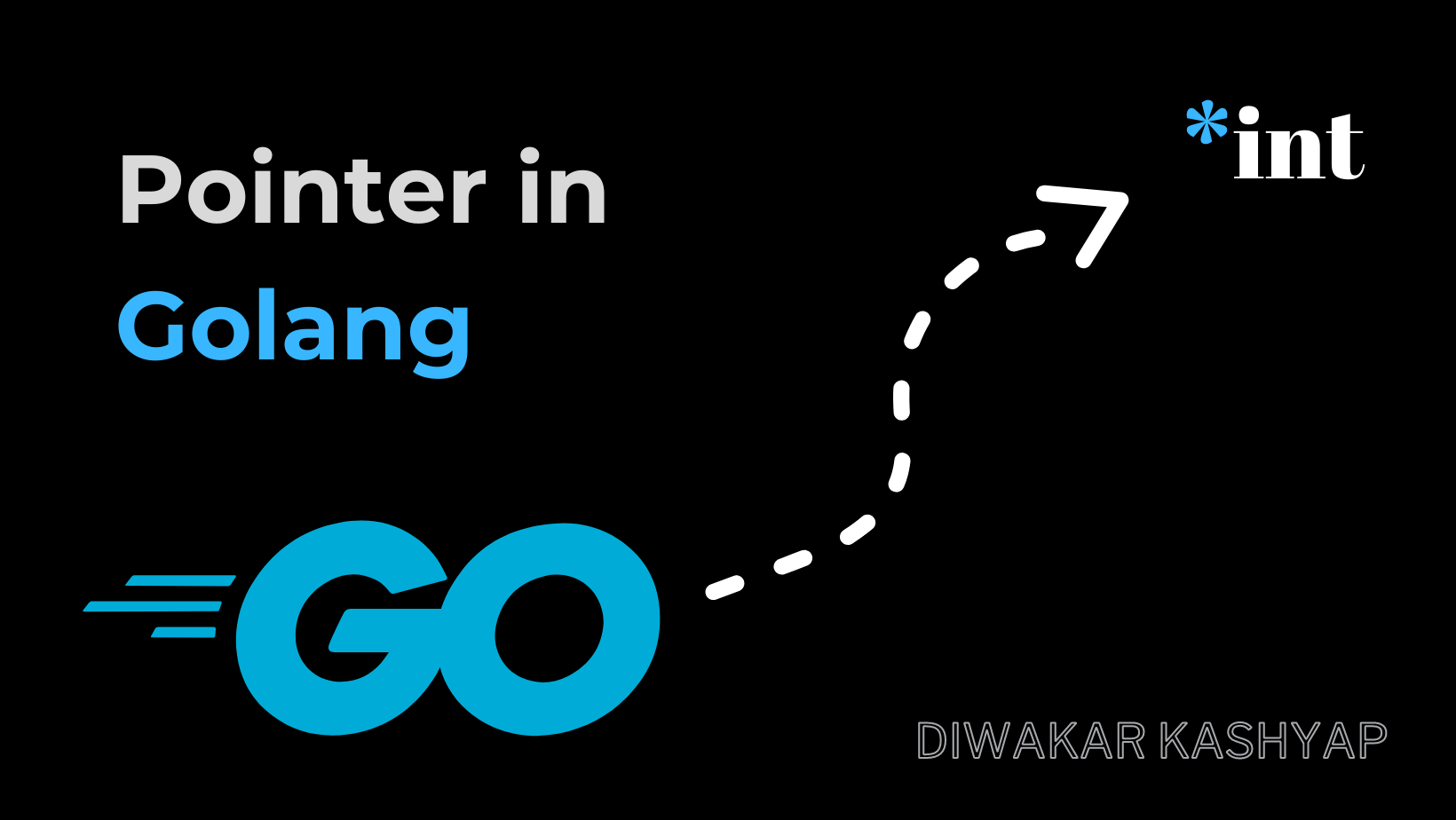Pointers in Golang (go)
 Diwakar
Diwakar
1. What are Pointers?
A pointer is a variable that stores the memory address of another variable. It essentially "points" to the location of another variable. This is useful for several reasons: it can be more memory efficient, it can allow you to modify the original variable directly, and it's essential for some data structures and algorithms.
2. Declaration and Initialization
In Go, pointers are declared using the * symbol followed by the type of the stored value. For example, a pointer to an int would be *int.
var x int = 10
var p *int // Declare a pointer to int
p = &x // Assign the address of x to p
Here, &x retrieves the memory address of x, and p now holds that address.
3. Dereferencing
To get the value stored at a pointer's address, you "dereference" it using the * symbol:
fmt.Println(*p) // Outputs: 10
4. No Pointer Arithmetic
Unlike some languages (like C or C++), Go doesn't allow pointer arithmetic by default. This means you can't do something like p++ to move to the next memory address. This decision was made to keep the language simpler and avoid potential pitfalls and errors.
5. The new Function
Go provides a built-in function called new that creates a variable and returns a pointer to that variable:
ptr := new(int) // Creates an int variable, sets it to 0, and returns a pointer to it
*ptr = 3 // Sets the value stored at ptr to 3
6. Reference Types
Certain types in Go, like slices, maps, and channels, are reference types. This means when you pass them to functions, you're actually passing a reference to the underlying data, not a copy of the data. As a result, modifying them inside a function will modify the original data:
func modifySlice(s []int) {
s[0] = 100
}
func main() {
slice := []int{1, 2, 3}
modifySlice(slice)
fmt.Println(slice) // Outputs: [100 2 3]
}
7. Use Cases for Pointers
Efficiency: Instead of copying large structs or objects, you can pass a pointer.
Modifying External Data: When you need to modify a variable defined outside the current scope.
Data Structures: Pointers are essential for building many data structures, like linked lists or trees.
8. Safety
Be cautious when working with pointers. Accessing a nil pointer or the wrong memory location can lead to runtime panics. Always ensure pointers are initialized and valid before dereferencing.
var p *int
fmt.Println(*p) // This will panic because p is nil
In conclusion, while pointers in Go provide powerful capabilities, they should be used judiciously. The language has been designed to allow you to get many of the benefits of pointers (e.g., with reference types) without always having to manage them directly.
Thank you for reading. I encourage you to follow me on Twitter where I regularly share content about JavaScript and React, as well as contribute to open-source projects and learning golang. I am currently seeking a remote job or internship.
Twitter: https://twitter.com/Diwakar_766
GitHub: https://github.com/DIWAKARKASHYAP
Portfolio: https://diwakar-portfolio.vercel.app/
Subscribe to my newsletter
Read articles from Diwakar directly inside your inbox. Subscribe to the newsletter, and don't miss out.
Written by

Diwakar
Diwakar
As a passionate developer, I thrive on acquiring new knowledge. My journey began with web development, and I am now actively engaged in open source contributions, aiding individuals and businesses.